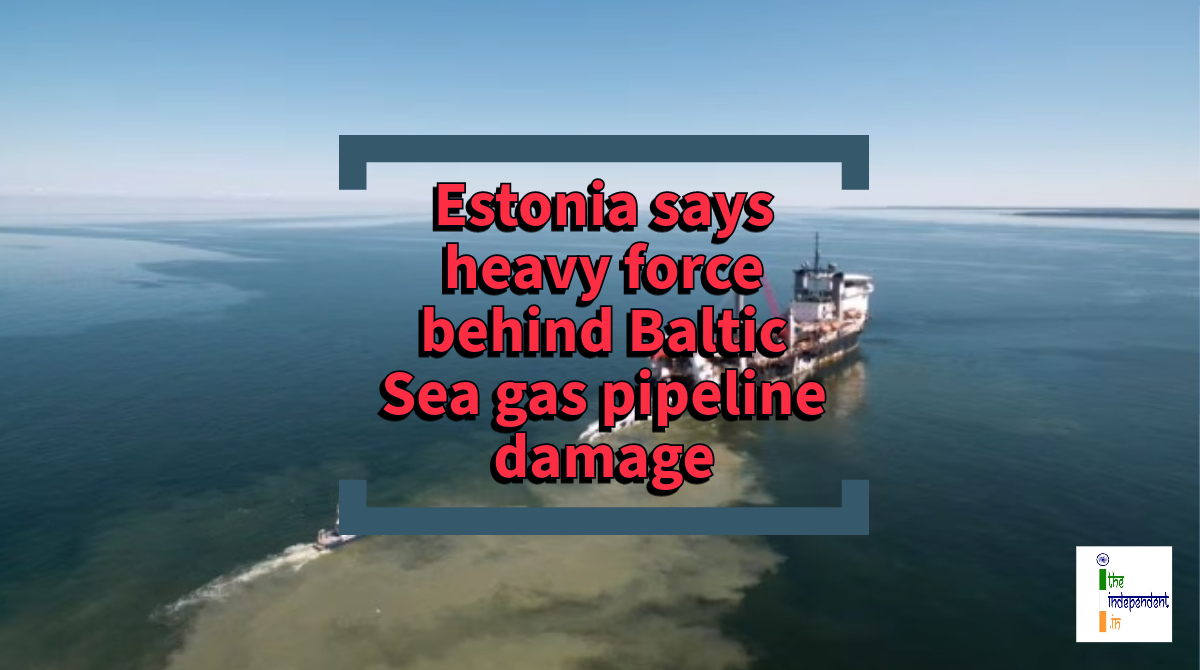
Hanno Pevkur of Estonia has said that heavy force destroyed the subsea gas pipeline and a telecommunications cable
The Defence Minister of Estonia – Hanno Pevkur, has said the damage to the Baltic Sea gas pipeline that burst recently was caused by quite heavy force.
Prior to this, Finland said that the damage to a subsea gas pipeline and a telecommunications cable connecting Finland and Estonia under the Baltic Sea could be a deliberate act.
It is to be noted that while Finland joined the North Atlantic Treaty Organisation (NATO) in April 2023, Estonia joined the alliance in 2004. The Secretary-General of NATO – Jens Stoltenberg, has said that NATO stands ready to support the allies concerned.
The Baltic connector gas pipeline was shut after concerns that gas was leaking from a hole in the 77-km (48-mile) pipeline. Finnish operator – Gasgrid said it could take months or more to repair.
A Statement from the President of Finland – Sauli Niinisto, said, “It is likely that damage to both the gas pipeline and the communication cable is the result of outside activity. The cause of the damage is not yet clear, the investigation continues in cooperation between Finland and Estonia.”
Jens Stoltenberg tweeted,
Spoke with President Sauli @niinisto on damage to undersea infrastructure between #Estonia & #Finland. #NATO is sharing information & stands ready to support Allies concerned. @TPKanslia @EstonianGovt
— Jens Stoltenberg (@jensstoltenberg) October 10, 2023
Finland said that the damage to the pipeline was worrying but assured that Finland’s energy supply remained stable and that the damage to the telecommunications cable did not affect Finland’s overall connectivity.
Finnish Telecommunications Operator – Elisa, which operates the damaged cable, said that the distance from the cable to the Baltic connector pipeline was significant. The damage to the gas pipeline is believed to have taken place in Finnish waters, while the telecoms cable breach was in Estonian waters.
Gas accounts for 5% of Finland’s energy supply. Prior to Russia’s invasion of Ukraine, some of the gas transported by the Baltic Connector came via pipeline from neighbouring Russia, but Finland has since year stopped importing Russian pipeline gas.
Norwegian Seismology Institute – Norsar said it has identified a probable explosion close to the location of the pipeline in the Baltic Sea at around the time of the outage, but there was significant uncertainty in the data and that more analysis was required.
The Finnish Bureau of Investigation has initiated an investigation into the external damage to the pipeline.
The Balticconnector runs to a depth of 100 metres (328 feet) at its deepest point, according to operator Gasgrid.
The pipeline between Inkoo in Finland and Paldiski in Estonia crosses the Gulf of Finland, an arm of the Baltic Sea that stretches eastwards into Russian waters and ends at the port of St Petersburg.
The Baltic Connector pipeline opened in December 2019 to help integrate gas markets in the region, giving Finland and the Baltic nations of Estonia, Latvia and Lithuania more flexibility of supply.
In 2022, Finland leased a floating storage and Regasification Unit (FSRU) to receive LIQUEFIED NATURAL GAS (LNG), replacing supplies from Russia, which were cut in the wake of Moscow’s invasion of Ukraine.







